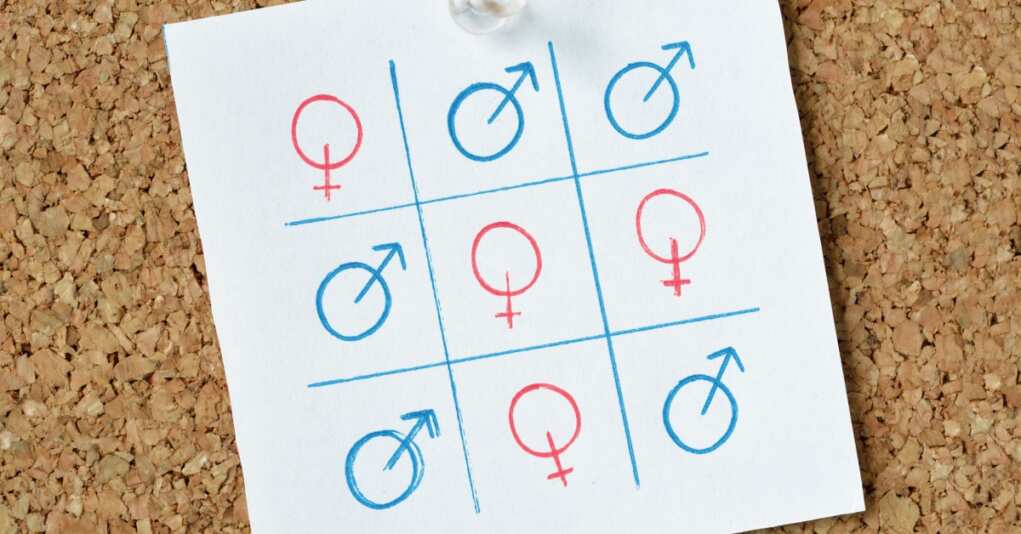The Gender Factor: Why This Election is Turning Into a Battle of the Sexes

Nothing can capture the sheer weirdness of these past two months in U.S. politics. What started as Republicans high-fiving each other in Milwaukee over the notion that the universe finally had Donald Trump’s back ended with Democrats suddenly rallying around Vice President Kamala Harris like she’s some kind of last-minute superhero.
The U.S. election has morphed into a face-off between a man and a woman. Not just any man and woman, mind you. On one side, there is Trump, who entered the political arena to the tune of James Brown’s “It’s a Man’s, Man’s, Man’s World.” He had a testosterone-infused entourage, including Kid Rock chanting “fight, fight, fight,” Hulk Hogan tearing his shirt open to reveal a Trump-Vance tank top (because subtlety is overrated), and Dana White, the UFC guy who loves blood-soaked combat.
In case Trump’s message wasn’t crystal clear, his choice of JD Vance as his running mate hammered it home. Trump could have, you know, maybe appealed to the “secret non-Trump voter” — those conservative women who actually care about things like bodily autonomy and might be uneasy about an all-out abortion ban. These are the same women who helped Nikki Haley get a decent chunk of votes in the primaries. However, Trump doubled down with Vance, the guy who’s all in on banning abortion nationwide.
Harris’s unexpected entry threw everything into chaos. Democrats, who were acting like they were attending a political funeral, suddenly became energized. Harris’s competitors practically tripped over each other to back her candidacy, signaling a party ready to unite and take on Trump. And it’s not hard to imagine that Harris’s swift rise was partly inspired by the chest-thumping, macho display Trump put on in Milwaukee. Harris, after all, has become the face of the fight to restore abortion rights since the Supreme Court trashed Roe v. Wade.
Kamala Harris has become the second woman and the first woman of color to ever receive such a nomination. While her rise through the ranks has been mostly smooth, Republicans have already made it clear that her gender and race will be central to their criticisms. Historically, gender has been used to undermine women in politics, but we’ve seen progress in normalizing women’s success in high-level roles. Harris’s campaign will show just how much these outdated criticisms still matter—or if they’ll backfire.
The gender gap was on clear display in the new 19th News/SurveyMonkey poll. The poll showed Kamala Harris is leading among women voters by 13 points, while Donald Trump leads with men by 8 points. Interestingly, nonbinary voters heavily favor Harris, giving her 83% of their support compared to just 7% for Trump. Harris has half of all voters approving of her, putting her in a good spot, but her net favorability is much higher with women than men. Women view her 12 points more favorably, while she’s 10 points underwater with men. Nonbinary voters really like her, with a 72-point net positive favorability rating.
Trump does best with white men, leading by 14 points, while Harris leads white women by six. Black voters are overwhelmingly behind Harris—Black women support her by 59 points, and Black men by 30.
When it comes to Latinx and Asian American-Pacific Islander (AAPI) voters, who are key in battleground states like Arizona and Nevada, Harris has a lead among Latinas by 16 points, though Latinos lean toward Trump by seven. AAPI women support Harris by 11 points, while Trump leads AAPI men by just two points.
Looking at age, Harris does better with both older and younger voters. She has 53% of support from voters aged 65 and up, while Trump has 39% of their support. Trump holds a slight edge with voters aged 35 to 64, but Harris leads among younger voters aged 18 to 34.
In terms of ‘electability,’ things have changed a lot; 93% of people were open to the idea of a female president, with Democrats showing 99% support and Republicans showing 87% support. Similarly, support for Black presidential candidates has increased from 38% in 1958 to 92% today, with Democrats showing more support than Republicans.
Women have made significant gains in U.S. politics, especially since Trump’s election. In 2018, women flipped many Democratic seats in Congress, and even Republican women made notable strides in 2020. Harris made history as the first female vice president, challenging the outdated belief that women can’t win elections.
It is evident that this election is showing a significant gender divide. Women, particularly women of color, are predominantly supporting Kamala Harris, while men are largely backing Trump. The data indicates that women are firmly rallying behind Harris, and this could have a significant impact in November.

